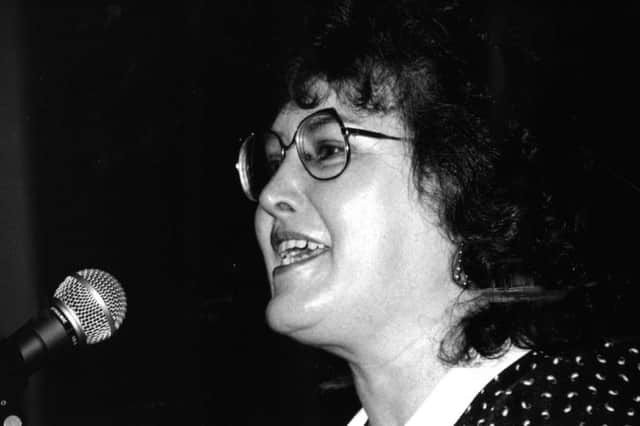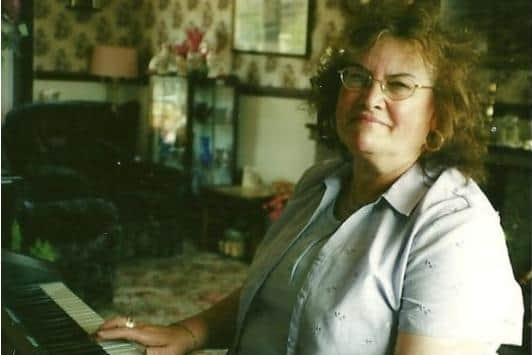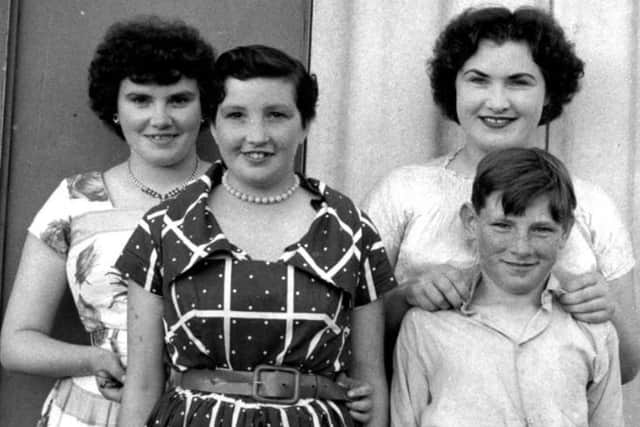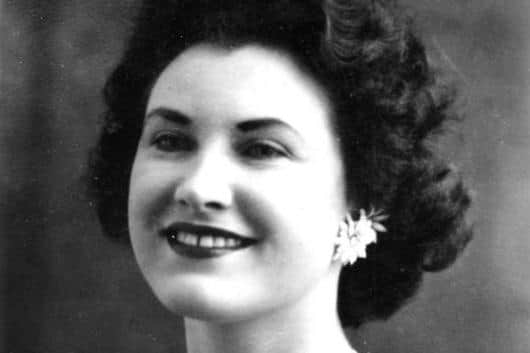Tribute paid to champion of traveller music traditions


Her family’s influence on the folk revival of the 1950s, 60s, and 60s in Britain and America proved immense.
She was born in Fetterangus, one of four children to Jean and Donald Stewart. Her mother Jean led a career as a pianist, accordionist, broadcaster, and band leader, for which she is well-remembered today by many throughout the North-East, while her aunt, Lucy Stewart proved a key figure in the modern folk revival.
Advertisement
Hide AdAdvertisement
Hide AdThese two, together with her uncle, Ned Stewart, an accomplished fiddler, formed the core of her musical and cultural influences. Such was the depth of musical tradition in her village that from some 300 residents, Fetterangus provided musicians for 13 dance bands in the 1930s and 40s.


Aided by this legacy, Elizabeth emerged a prodigy, able to play “My Aul Wife an Your Aul Wife” at three. By nine she was playing gigs across northeast Scotland in her mother’s Jean Stewart Band,
sneaked in beneath many a publican’s gaze, and by her teens was broadcasting on the BBC.
In the mid-1950s, folklorist Hamish Henderson of Edinburgh’s School of Scottish Studies recorded a range of stories, riddles, music, and songs rarely heard outside the home. Lucy’s reputation spread in the late 1950s, drawing more attention to the family’s rich traditions and, in 1959, Ewan MacColl, Peggy Seeger, and Charles Parker visited, working on the Radio Ballads, their pioneering prize-winning documentaries interweaving oral history interviews with MacColl-penned songs.
Elizabeth’s jazzy, up-tempo version of “The Hill o Bennachie” was used by MacColl for his now well-known “traditional” song, “Come Aa Ye Fisher Lassies”. Elizabeth and her sister Jane made the long train journey down to Birmingham to record the song, their Buchan dialect, familial harmonies, and natural talent lending effortless authenticity.


American folklorist Kenneth S. Goldstein spent nearly a year with the family from 1959, immediately
enamoured of Elizabeth’s remarkable skill as a pianist, from the traditional strathspeys, reels, the majestic “heavy pipe marches”, as she called them, to Country and Western, classical, and boogie-woogie. “Scotland’s answer to Winifred Atwell”, as she has been called.
After her mother’s untimely death at just 50 years old, Elizabeth took responsibility for the family,
Advertisement
Hide AdAdvertisement
Hide Adworking during the day in traditional Traveller business of dealing in second-hand goods, and at night playing in dance halls and hotels, holding family and self together through a combination of personal grit, and the bonds of music and song.


At 33, Elizabeth undertook an 18-state tour of festivals and college campuses organised by another American folklorist, Charles Joyner. She soon became better known in the UK folk scene, as a pianist and ballad singer, always acknowledging the legacies bequeathed her by her aunt and her mother, bringing their Traveller traditions to wider audiences.
In 1988, she was a guest of Harvard University in celebrating the centenary of Francis James Child’s English and Scottish Popular Ballads, the work which coalesced our understanding of the immense cultural inherence on our doorstep.
For Elizabeth, these were living songs, part of family and community, not simply literary artefacts.
Stewart recorded Atween You an Me (1992), while continuing to play traditional music festivals in the North-East.
The early 2000s saw her record a double CD, Binnorrie: Songs, Ballads, and Tunes, featuring more than two hours of songs and music which showcases her mastery of Scottish fiddle and bagpipe music on the piano.
And in 2012 came Up Yon Wide and Lonely Glen: Travellers’ Songs, Stories and Tunes of the Fetterangus Stewarts, her rich memoire of Traveller life in rural Aberdeenshire.
The book contains more than 100 songs and mixes the realities of a challenging life with the incomparably rich landscape of traditional music and song that was both sustenance and responsibility throughout her life.
Advertisement
Hide AdAdvertisement
Hide AdElizabeth and I spent many hours together since I first met her in 1988, at the Edinburgh Folk Festival.
Standing in the lobby afterwards, she took my hand, looked me in the eye and sang to me, into me, and, it seemed, to me alone.
No one, and I mean no one could put a song across like Elizabeth Stewart.
Sometimes she put them across so well that she herself couldn’t go on, overcome by the unfolding tragedy and by the constellation of family, history, love, and emotional life that informs the songs. I’ll never forget that.
She is survived by her children, Jeannette, Elizabeth, and Michael, sister Jane, and a generation of traditional singers and performers for whom she embodied resilience, and the power and potential of traditional music and song.